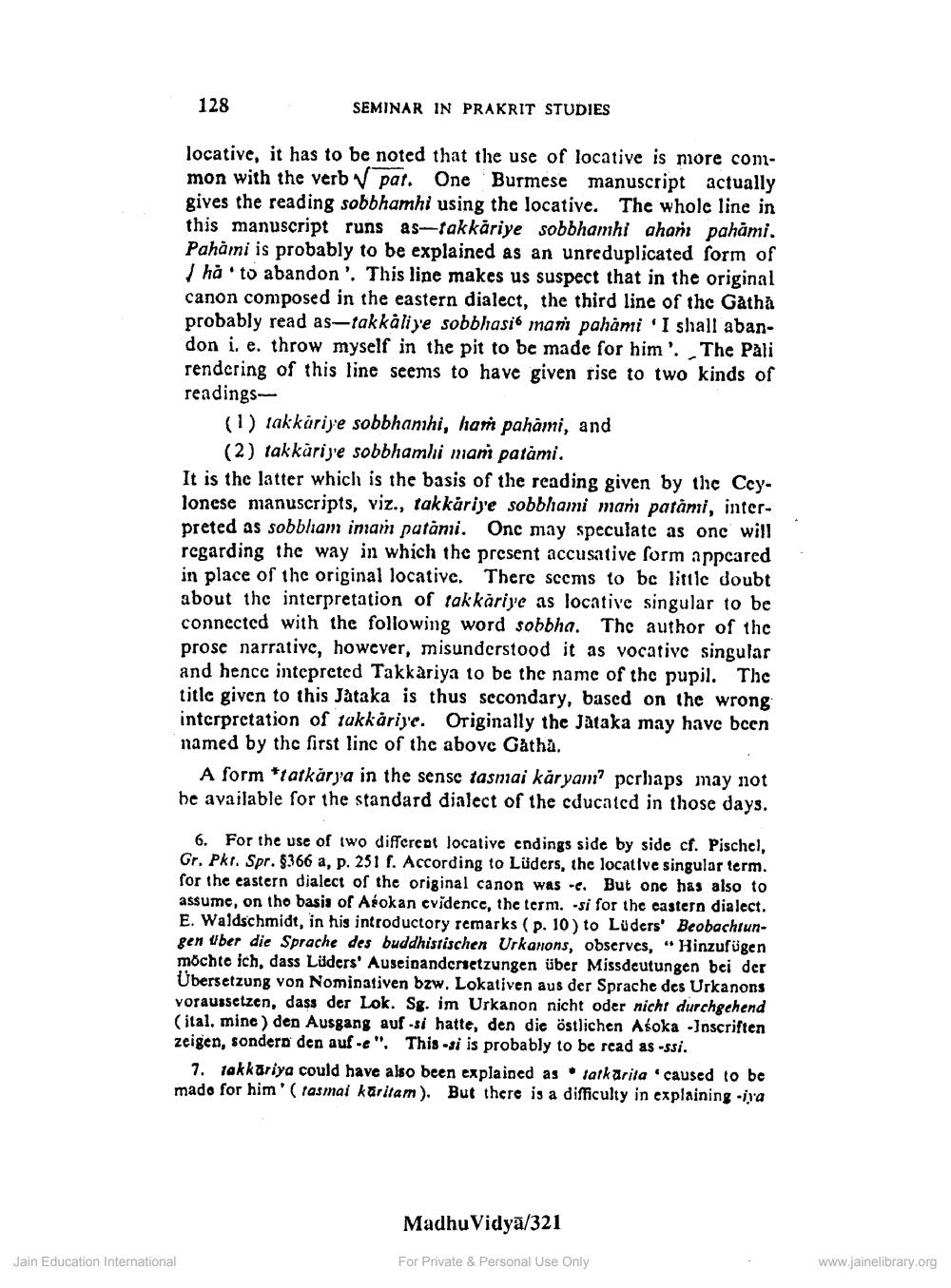________________
128
SEMINAR IN PRAKRIT STUDIES
locative, it has to be noted that the use of locative is more common with the verb V pat. One Burmese manuscript actually gives the reading sobbhamhi using the locative. The whole line in this manuscript runs as--fakkariye sobbhamhi ahan pahami. Pahami is probably to be explained as an unreduplicated form of
ha .to abandon'. This line makes us suspect that in the original canon composed in the eastern dialect, the third line of the Gathă probably read as-takkåliye sobbhasió mari pahami 'I shall abandon i. e. throw myself in the pit to be made for him'. The Pali rendering of this line seems to have given rise to two kinds of readings
(1) takkáriye sobbhanhi, ham pahami, and
(2) takkārije sobbhamhi man patami. It is the latter which is the basis of the reading given by the Ceylonese manuscripts, viz., takkariye sobblami man patami, interpreted as sobbliam inam patanii. Onc may speculate as one will regarding the way in which the present accusative form appeared in place of the original locative. There seems to be little doubt about the interpretation of takkariye as locative singular to be connected with the following word sobbha. The author of the prose narrative, however, misunderstood it as vocative singular and hence intepreted Takkariya to be the name of the pupil. The title given to this Jataka is thus secondary, based on the wrong interpretation of takkariye. Originally the Jataka may have been named by the first line of the above Gatha.
A form *tatkarya in the sense tasmai karyam? perhaps may not be available for the standard dialect of the cducated in those days.
6. For the use of two different locative endings side by side cf. Pischel, Gr. Pkt. Spr. $366 a, p. 251 f. According to Lüders, the locative singular term. for the eastern dialect of the original canon was -e. But onc has also to assume, on tho basis of Asokan evidence, the term. -si for the eastern dialect. E. Waldschmidt, in his introductory remarks (p. 10) to Lüders' Beobachtungen Uber die Sprache des buddhistischen Urkanons, observes, “Hinzufügen möchte ich, dass Lüders' Auseinandersetzungen über Missdeutungen bei der Übersetzung von Nominativen bzw. Lokativen aus der Sprache des Urkanons voraussetzen, dass der Lok. Sg. im Urkanon nicht oder nicht durchgehend (ital. minc) den Ausgang auf -si hatte, den die östlichen Asoka -Inscriften zeigen, sondern den auf -e"This -si is probably to be read as-ssi.
7. takkäriya could have also been explained as sarkarila 'caused to be mado for him (tasmai käritam). But there is a difficulty in explaining iya
Madhu Vidya/321
Jain Education International
For Private & Personal Use Only
www.jainelibrary.org




